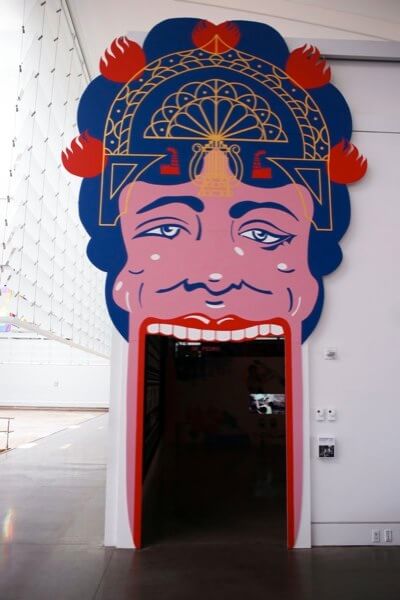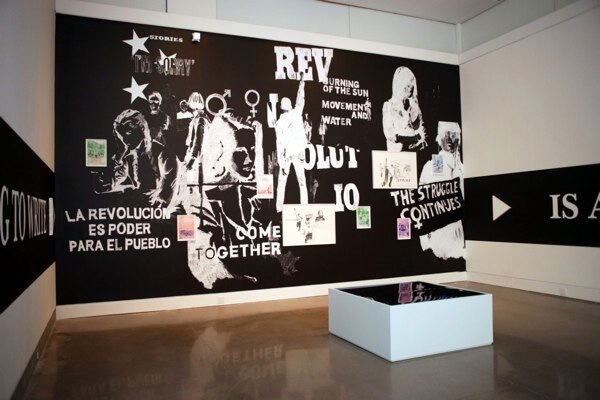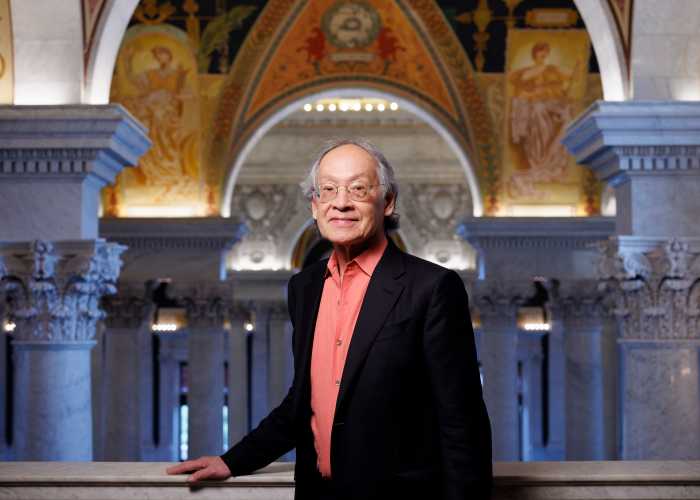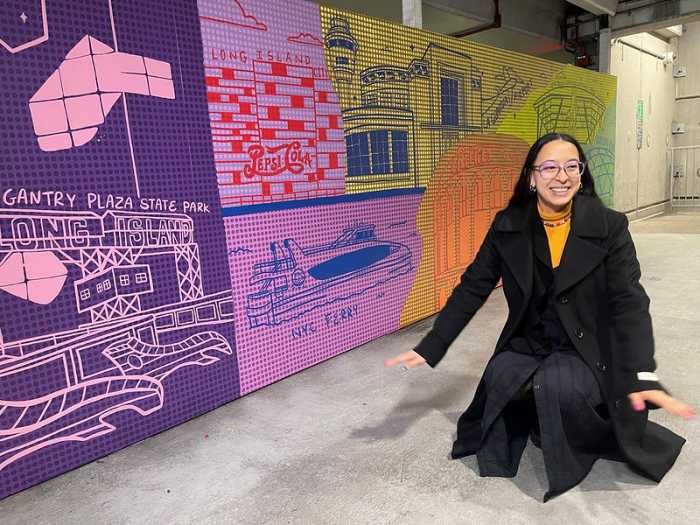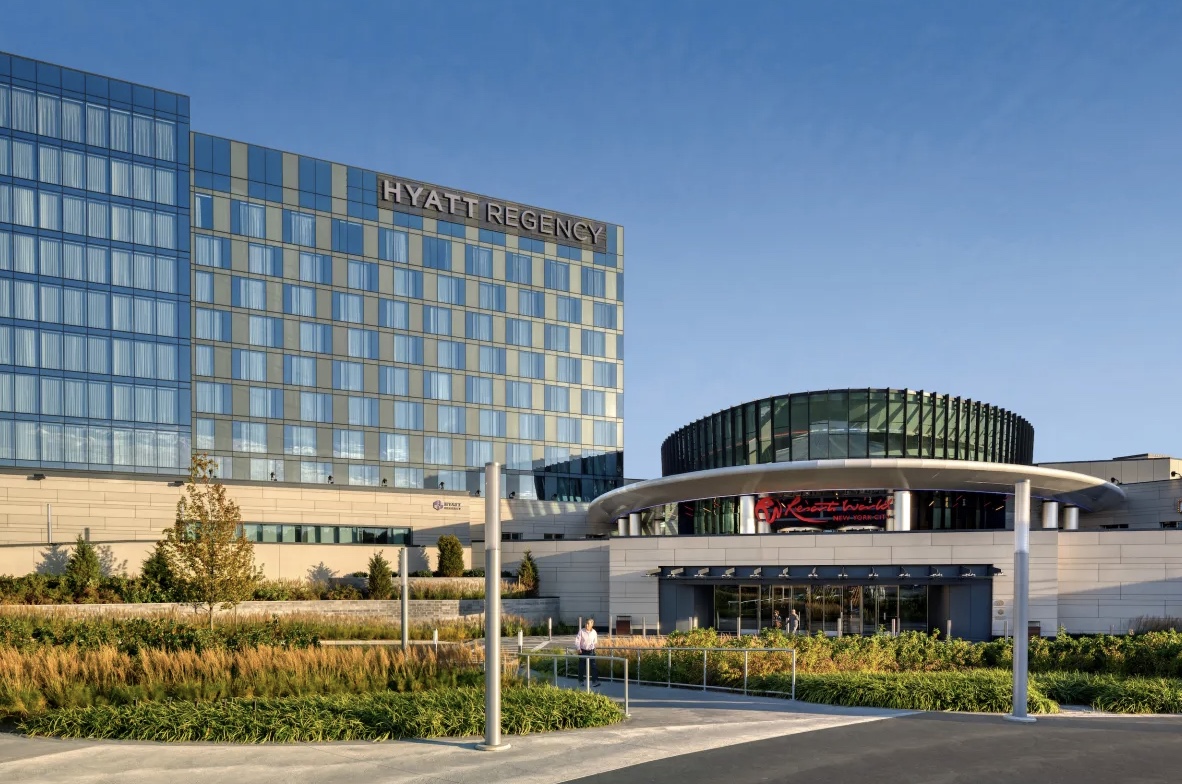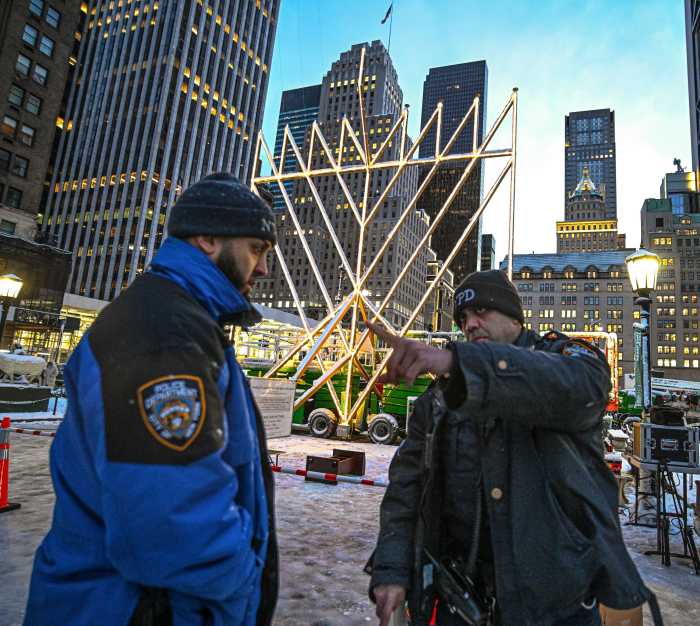By Merle Exit
Queens Museum is showcasing the works of Italian artist Marinella Senatore in a multifaceted installation entitled “Piazza Universale/Social Stages.”
The exhibit takes up three galleries, and combines art, film, and audience participation in ways intended to evoke 19th- and 20th-century amusement parks and world fairs, according to curator Matteo Luccheti. He said the title reflects the idea of a piazza as “a public space where diverse walks of life meet and imagine how things could go otherwise — a concept dear to the Italian tradition of conceiving the public space.”
The exhibit’s entrance is a Coney Island-style fun-house doorway depicting a woman’s mouth. As with an amusement park ride, entering the space is to accept and unexpected experience, according to Luccheti
“Similarly, participants of Marinella’s works test themselves outside their comfort zone,” he said. “This is the space where social stages are crossed by collaborators of the different projects: literal stages that are temporarily built in the public space, but also the progression from one social position to an unforeseen one.”
Luccheti said that the exhibition is set up to involve the audience as participants in Senatore’s art.
“Four past big projects of Marinella Senatore have been carefully rethought in order to communicate with each other and highlight the methodology of Marinella’s inclusive participatory projects,” he said. “We wanted to show what a socially engaged and community-based artistic practice can look like today without relying on documentation only, but rather transforming the exhibition space into the backstage of an imaginary theater where different past plays come to life.”
The audience members are guided through the show by a series of lights and music scores associated with each of the pieces, which turn on and off following a specific dramatization.
“Like this, the pieces can be experienced in a more traditional way,” Luccheti said, “by sitting down with headphones and watching the entire video or rather composing a live editing of image and sound by walking and looking at the works while different music pieces are playing.”
In addition to audience participation, the exhibit highlights another strong theme in Senatore’s work: protest as an artistic form.
“It gives shape to new ideas and new ways of understanding politics and society while it’s being performed,” Luccheti said. “There is an incredible fascination and involvement from the artist on this realm which brought her to dedicate a lot of her works to the study of protest. A whole room is therefore featuring works by the artist that deal with poetry, song-writing and marching as forms of social change and repositories of knowledge that can empower individuals and entire communities.”
On April 9, the exhibition’s opening day, a performance took place entitled “Protest Forms: Memory and Celebration Part II,” which featured 350 participants: activists, poets, singers, dancers, wrestlers, musicians, folk groups and more.
“They performed together in an empowering context that was able to reveal different sides of already known political movements, while bridging them with artistic groups, such as ballet or symphonic music,” said Luccheti. “Ultimately, both the exhibition and the performance want to show that the power of getting bodies together under the same egalitarian beliefs producing another way of being together is one of the most important opportunities that artistic practices have today, and Senatore is working for a long time now to make this option a viable and available one for as many people as possible.”
“Piazza Universale/Social Stages” runs through July 30. at the Queens Museum.

